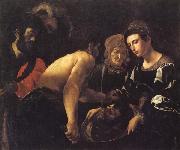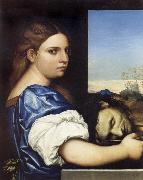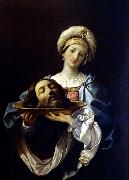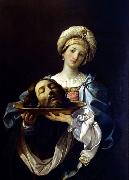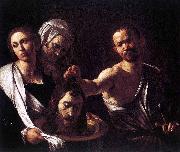Wholesale Oil Painting No Minimum |
|||||||||||
|
|
|||||||||||

|
|||||||||||
|
|
|
||||||||
CARACCIOLO, Giovanni BattistaItalian Baroque Era Painter, ca.1578-1635 Italian painter. He was one of the greatest Caravaggesque painters and the founder of Neapolitan Caravaggism. His Liberation of St Peter (c. 1615; Naples, Pio Monte della Misericordia; ) and Christ Washing the Feet of the Disciples (1622; Naples, Certosa di S Martino; see fig. 2 below) are masterpieces of 17th-century Neapolitan art, and attain a powerful and tragic grandeur. |
||||||||
|
|
||||||||
Salome with the Head of John the Baptist
Salome with the Head of John the Baptist Painting ID:: 28957 |
mk65
Oil on canvas
52x61 7/16
Uffizi
mk65 Oil on canvas 52x61 7/16 Uffizi |
|||||||
|
|
||||||||
Sebastiano del Piombo1485-1547 Italian Sebastiano del Piombo Galleries Italian painter. He was one of the most important artists in Italy in the first half of the 16th century, active in Venice and Rome. His early, Venetian, paintings are reminiscent of Giovanni Bellini and to a lesser extent of Giorgione. With his move to Rome in 1511 he came under the influence of Raphael and then of Michelangelo, who supplied him with drawings. After the death of Raphael (1520) he was the leading painter working in Rome and was particularly noted as a portrait painter. In his finest works, such as the Piete (1513; Viterbo, Mus. Civ.) and the Flagellation (1516-24; Rome, S Pietro in Montorio), there is a remarkable fusion of the Venetian use of colour and the grand manner of central Italian classicism. |
||||||||
|
|
||||||||
|
|
Salome with the Head of John the Baptist
Salome with the Head of John the Baptist Painting ID:: 43036 |
mk170
dated 1510
Oil on wood
55.2x44.9cm
mk170 dated 1510 Oil on wood 55.2x44.9cm |
||||||
|
|
||||||||
Guido Reni1575-1642 Italian Guido Reni Galleries Born in Bologna into a family of musicians, Guido Reni was the son of Daniele Reni and Ginevra de?? Pozzi. As a child of nine, he was apprenticed under the Bolognese studio of Denis Calvaert. Soon after, he was joined in that studio by Albani and Domenichino. He may also have trained with a painter by the name of Ferrantini. When Reni was about twenty years old, the three Calvaert pupils migrated to the rising rival studio, named Accademia degli Incamminati (Academy of the "newly embarked", or progressives), led by Lodovico Carracci. They went on to form the nucleus of a prolific and successful school of Bolognese painters who followed Annibale Carracci to Rome. Like many other Bolognese painters, Reni's painting was thematic and eclectic in style. By late 1601, Reni and Albani had moved to Rome to work with the teams led by Annibale Carracci in fresco decoration of the Farnese Palace. During 1601-1604, his main patron was cardinal Sfondrato. By 1604-1605, he received an independent commission for an altarpiece of the Crucifixion of St. Peter. After a few year sojourn in Bologna, he returned to Rome to become one of the premier painters during the papacy of Paul V (Borghese). From 1607-1614, he was one of the painters patronized by Borghese. Abduction of Deianira, 1620-1621.Reni's frescoed ceiling of the large central hall of garden palace, Casino dell'Aurora located in the grounds of the Palazzo Pallavicini-Rospigliosi, is considered his masterpiece. The casino was originally a pavilion commissioned by Cardinal Scipione Borghese; the rear portion overlooks the Piazza Montecavallo and Palazzo del Quirinale. The massive fresco is framed in quadri riportati and depicts Apollo in his Chariot preceded by Dawn (Aurora) bringing light to the world. The work is restrained in classicism, copying poses from Roman Sarcophagi, and showing far more simplicity and restraint than Carracci's riotous Triumph of Bacchus and Ariadne[5] in the Farnese. Reni in this painting is allies himself more with the sterner Cavaliere d'Arpino,Lanfranco, and Albani "School" of mytho-historic painting, and less with the more crowded frescoes characteristic of Pietro da Cortona. There is little concession to perspective, and the vibrantly colored style is antithetical to the tenebrism of Caravaggio's followers. Payments showed that he was paid in 247 scudi and 54 baiocchi upon completion on 24 September 1616. He also frescoed in Paoline Chapel of Santa Maria Maggiore in Rome as well as the Aldobrandini wings of the Vatican. According to rumor, the pontifical chapel of Montecavallo (Chapel of the Annuciation) was assigned to Reni to paint. However, because he felt underpaid by the ministers, the artist left for Bologna, leaving the role of the preeminent artist in Rome to Domenichino. |
||||||||
|
|
||||||||
|
|
Salome with the Head of John the Baptist
Salome with the Head of John the Baptist Painting ID:: 71527 |
1630-1635
Oil on canvas
1630-1635 Oil on canvas |
||||||
|
|
||||||||
Guido Reni1575-1642 Italian Guido Reni Galleries Born in Bologna into a family of musicians, Guido Reni was the son of Daniele Reni and Ginevra de?? Pozzi. As a child of nine, he was apprenticed under the Bolognese studio of Denis Calvaert. Soon after, he was joined in that studio by Albani and Domenichino. He may also have trained with a painter by the name of Ferrantini. When Reni was about twenty years old, the three Calvaert pupils migrated to the rising rival studio, named Accademia degli Incamminati (Academy of the "newly embarked", or progressives), led by Lodovico Carracci. They went on to form the nucleus of a prolific and successful school of Bolognese painters who followed Annibale Carracci to Rome. Like many other Bolognese painters, Reni's painting was thematic and eclectic in style. By late 1601, Reni and Albani had moved to Rome to work with the teams led by Annibale Carracci in fresco decoration of the Farnese Palace. During 1601-1604, his main patron was cardinal Sfondrato. By 1604-1605, he received an independent commission for an altarpiece of the Crucifixion of St. Peter. After a few year sojourn in Bologna, he returned to Rome to become one of the premier painters during the papacy of Paul V (Borghese). From 1607-1614, he was one of the painters patronized by Borghese. Abduction of Deianira, 1620-1621.Reni's frescoed ceiling of the large central hall of garden palace, Casino dell'Aurora located in the grounds of the Palazzo Pallavicini-Rospigliosi, is considered his masterpiece. The casino was originally a pavilion commissioned by Cardinal Scipione Borghese; the rear portion overlooks the Piazza Montecavallo and Palazzo del Quirinale. The massive fresco is framed in quadri riportati and depicts Apollo in his Chariot preceded by Dawn (Aurora) bringing light to the world. The work is restrained in classicism, copying poses from Roman Sarcophagi, and showing far more simplicity and restraint than Carracci's riotous Triumph of Bacchus and Ariadne[5] in the Farnese. Reni in this painting is allies himself more with the sterner Cavaliere d'Arpino,Lanfranco, and Albani "School" of mytho-historic painting, and less with the more crowded frescoes characteristic of Pietro da Cortona. There is little concession to perspective, and the vibrantly colored style is antithetical to the tenebrism of Caravaggio's followers. Payments showed that he was paid in 247 scudi and 54 baiocchi upon completion on 24 September 1616. He also frescoed in Paoline Chapel of Santa Maria Maggiore in Rome as well as the Aldobrandini wings of the Vatican. According to rumor, the pontifical chapel of Montecavallo (Chapel of the Annuciation) was assigned to Reni to paint. However, because he felt underpaid by the ministers, the artist left for Bologna, leaving the role of the preeminent artist in Rome to Domenichino. |
||||||||
|
|
||||||||
|
|
Salome with the Head of John the Baptist
Salome with the Head of John the Baptist Painting ID:: 72737 |
Date 1630-1635
Medium Oil on canvas
Dimensions X cm
cyf Date 1630-1635 Medium Oil on canvas Dimensions X cm cyf |
||||||
|
|
||||||||
CaravaggioItalian Baroque Era Painter, ca.1571-1610 Italian painter. After an early career as a painter of portraits, still-life and genre scenes he became the most persuasive religious painter of his time. His bold, naturalistic style, which emphasized the common humanity of the apostles and martyrs, flattered the aspirations of the Counter-Reformation Church, while his vivid chiaroscuro enhanced both three-dimensionality and drama, as well as evoking the mystery of the faith. He followed a militantly realist agenda, rejecting both Mannerism and the classicizing naturalism of his main rival, Annibale Carracci. In the first 30 years of the 17th century his naturalistic ambitions and revolutionary artistic procedures attracted a large following from all over Europe. |
||||||||
|
|
||||||||
|
|
Salome with the Head of John the Baptist
Salome with the Head of John the Baptist Painting ID:: 94797 |
. 1607
Type Oil on canvas
Dimensions 91.5 cm x 106.7 cm
cyf . 1607 Type Oil on canvas Dimensions 91.5 cm x 106.7 cm cyf |
||||||
|
|
||||||||
|
Caravaggio Italian Baroque Era Painter, ca.1571-1610 Italian painter. After an early career as a painter of portraits, still-life and genre scenes he became the most persuasive religious painter of his time. His bold, naturalistic style, which emphasized the common humanity of the apostles and martyrs, flattered the aspirations of the Counter-Reformation Church, while his vivid chiaroscuro enhanced both three-dimensionality and drama, as well as evoking the mystery of the faith. He followed a militantly realist agenda, rejecting both Mannerism and the classicizing naturalism of his main rival, Annibale Carracci. In the first 30 years of the 17th century his naturalistic ambitions and revolutionary artistic procedures attracted a large following from all over Europe. Salome with the Head of John the Baptist . 1607 Type Oil on canvas Dimensions 91.5 cm x 106.7 cm cyf |
||||||||
|
|
||||||||
|
Prev Next
|
||||||||
|
|
||||||||
|
Related Paintings to Caravaggio :. |
||||||||
|
|
||||||||
|
CONTACT US |
